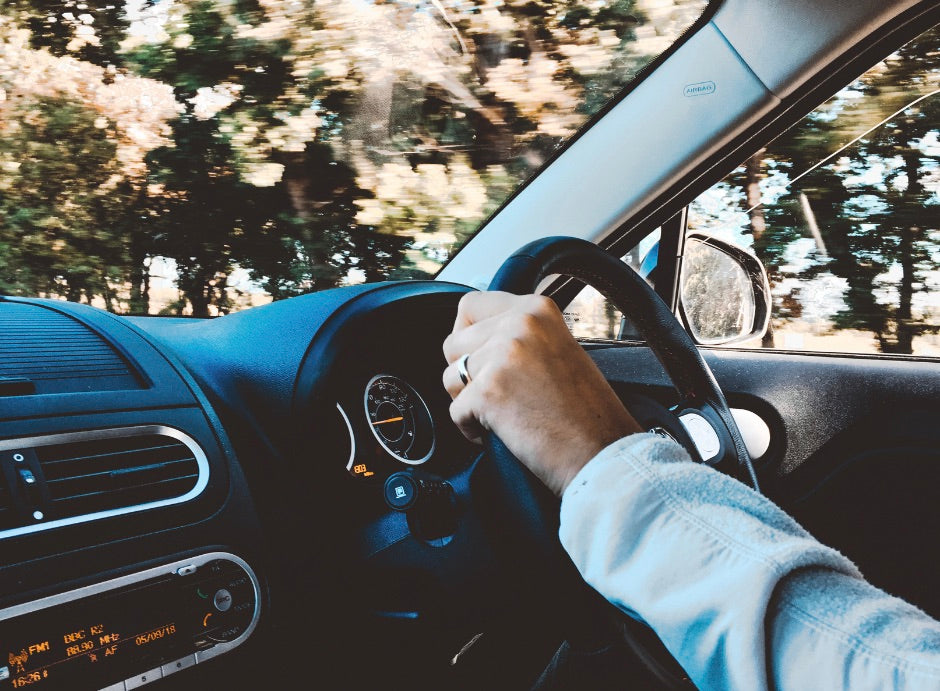Next working day delivery with Royal Mail Tracked 24
How To Keep Your Pet Safe In The Car

How To Keep Your Pet Safe In The Car
Visits to the vets, holidays, heading off on a long dog walk - there will inevitably be instances where your pet finds their way into your car to get from A to B. But how can you ensure your pet is safe during transit? What are the best (and legal) ways to transport your pet inside a vehicle? How should you prepare, and how can you keep your pet as relaxed as possible? Here are some tips to keeping your pet safe and secure along the way!
Cars and carriers:
There are several ways you can transport your pet in your car whilst keeping them safe and secure. A very common way is by using carriers. Carriers are suitable for transporting cats, small pets (like rabbits and guinea pigs) and small dogs (depending on the owner's preference). Carriers provide protection and control, ensuring your pet does not become a projectile during accidents, and of course prevents your pet from escaping and wondering around your car whilst you're driving. Make sure to select a carrier that has sufficient ventilation and is large enough for your pet to stand up and turn around so that they can remain comfortable. For long trips, it's good if there is also enough space for food and water bowls inside the carrier, as well as having well-tested locks and securing the carrier in place with a seatbelt.

Secure seatbelts:
For short trips, seatbelt tethers are a good option for dogs. Most seatbelt tethers come with a clip that fastens onto your dog's lead or harness and then plugs into your car's seatbelt as normal. These accessories keep your dog in place, preventing distractions as you drive and keeping them secure when opening car doors/ loading and unloading the car.
Guards:
Dog guards may be a suitable option for larger dogs that cannot fit into carriers or crates. They act as a divider between the front of and back of your car, and relegate your dog to the boot or back seat of your vehicle. It is important to note, however, that without anything else keeping your dog secure, this method of transportation does not protect your dog during accidents and crashes.
How to keep your pet calm during a journey:
It's no surprise that some pets may find travelling in the car challenging or anxiety-inducing. For some pets, a bit of fuss and complaining is inevitable, but there are some tips to help reduce the amount of anxiety they experience.
- Acclimatisation - Try making your pet familiar with carriers and crates prior to the journey. This can be as simple as leaving their carrier around the house for them to smell, approach and sit in on their own accord. Using the same carrier for each trip will help create a sense of familiarity and reduce anxiety.
- Car sickness - Some pets can suffer from car sickness due to anxieties or sensory confusion. Always try and keep their carrier facing the direction of travel and allow plenty of ventilation. If your pet suffers from repeated car sickness, consult your vet for any medications that may help ease their symptoms.
- Toys and blankets - Providing your pet with favourite and familiar toys or blankets can help to calm them during journeys. This is particularly because their toys will transfer familiar and comforting scent to their carrier, helping to put them at ease.
- Space - whether in a carrier, belted in or behind a guard, ensure that your pet has enough space to sit up and turn around. Just like us humans, your pet won't appreciate feeling claustrophobic!
- Anxiety sprays and scents - Some pets particularly benefit from calming sprays and treats that help to soothe their anxieties.
DOs and DONTs:
DO give your pet enough space to sit up and turn around.
DO try to keep your trips as short as possible, especially on your pet's first trip in the car.
DO make sure your pet is secure and comfortable.
DON'T allow your pet to roam freely inside the vehicle - The UK Highway Code requires that all pets are sufficiently secured and restrained during transit in a car.
DON'T transport your pet in the front of the car. Always choose the backseat or boot, to prevent driver distraction and to minimise your pet's proximity to airbags and crumple zones.
Transporting your pet in your car doesn't have to be stressful, and by following a few of these tips, you can ensure that both you and your pet are safe and comfortable for the journey.
